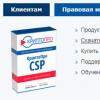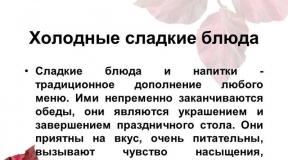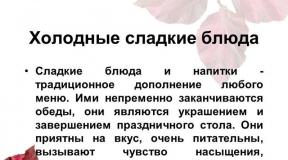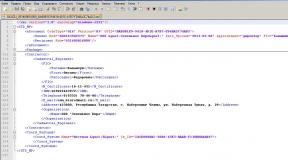List of mandatory and additional literature on the discipline of occupational diseases. References - occupational diseases of agricultural workers Occupational diseases References
"Occupational pathology: yesterday, today, tomorrow"
Books (2003-2008)
Actual problems of occupational medicine: materials XL Interregion. scientific-practical conf. with int. participation "; Hygiene, health care organization and occupational pathology"; / Kuzbass. scientific. center; GU Research Institute of Complex Problems of Hygiene and prof. diseases; ed. V.V. Zakharenkova. - Novokuznetsk, 2005 .-- 174 p. (Code ONMB 613.6 (063) A-437).
Rehabilitation treatment of victims of work injuries and occupational diseases at the sanatorium stage: materials VII interregion. scientific-practical Conf., (May 19, 2006, Novokuznetsk) - Kemerovo: ID "; Medicine and Education" ;, 2006. - 160 p. - (Medicine in Kuzbass; No. 5-2006). (Code ONMB 616-057 (063) B77).
Occupational hygiene and occupational pathology: materials XXXVIII scientific-practical. conf. with int. participation of "Hygiene, organization of health care and occupational pathology." - Novokuznetsk, 2003 .-- 200s. (Code ONMB 613.62 (063) G-463).
Diagnostics, treatment and prevention of occupational diseases: method. recommendations / comp. G.K.Dodonova and others - Kemerovo, 2003 .-- 128p. (Code ONMB XVI D-44).
Efremova, O.S. Medical examinations of employees of organizations / O.S. Efremova. - M .: Alfa-Press, 2007 .-- 168 p. (Code ONMB 614.21 E92).
Zakharenkov, V.V. The register of workers' health: method. recommendations / V.V. Zakharenkov, V.V. Razumov, Tsai L.V .; Novokuznets. state Institute of advanced training for doctors. - Novokuznetsk, 2007 .-- 24 p. (Code ONMB 614.2 (083.13) З-38).
Health and preservation of the labor potential of the Kuzbass population: mater. the first scientific. session Kuzbass. scientific. Center SB RAMS, Kemerovo 23 Jan. 2004 - Kemerovo, 2004 .-- 68p. - (Medicine in Kuzbass: Special issue No. 1/2004). (Code ONMB 614.2 (063) З-467).
Clinical aspects of occupational pathology: [collection] / ed. V. V. Razumova; Novokuznets. state institute for advanced training of doctors, research institute of complex problems of hygiene and prof. diseases of the Siberian Branch of the Russian Academy of Medical Sciences, Center of prof. pathology MLPU GKB №1. - Novokuznetsk, 2007 .-- 72 p. (Code ONMB 613.62 K49).
Critical conditions in miners with diseases and man-made disasters: materials of the All-Russian. scientific-practical Conf., 8-9 Dec. 2005 / GOU DPO Novokuzn. state Institute for Advanced Training of Doctors; KemSMA; Kuzbass. scientific. center; Scientific wedge. miners' health center. - Novokuznetsk, 2005 .-- 320 p. (Code ONMB 616-082 K82).
Treatment and rehabilitation of occupational diseases and persons injured at work: mater., Dedicated. 25th anniversary of the Federal State Institution of the Center for Rehabilitation of the Social Fund. Insurance of the Russian Federation "Topaz". - Kemerovo: Medicine and education, 2004. - 92p. - (Medicine in Kuzbass; Special issue No. 2/2004). (Code ONMB 614.2 L-537).
Materials of the All-Russian methodological seminar "; Problems of medical and social examination and rehabilitation of victims of industrial accidents and occupational diseases"; Materials of the All-Russian scientific and practical conference "; Treatment, medical and social examination and rehabilitation in orthopedics, neurosurgery, angiology" ;, 16-17 Sept. 2008 Novokuznetsk / Kuzbass. scientific. center SB RAMS, Research Institute of complex problems of hygiene and prof. diseases SB RAMS, FGU Novokuznets. scientific-practical Center for Medical and Social Expertise and Rehabilitation of Disabled People of the Ministry of Health and Social Development of Russia. - Kemerovo: ID "; Medicine and Education" ;, 2008. - 180 p. (Code ONMB. 616-036.865 М34).
Methodological bases for conducting preliminary and periodic medical examinations of persons working in harmful and (or) hazardous working conditions: method. recommendations. - M., 2005 .-- 21 p. (Code ONMB 614.2 M54).
Methodology for the examination of the connection between the disease and the profession: method. recommendations / V. V. Razumov, O. V. Matveeva, S. I. Rodin and others; Novokuznets. state Institute of advanced training for doctors. - Novokuznetsk, 2007 .-- 24 p. (Code ONMB 616-036.865 М54).
Pankova, I. A. Age features indicators of disability due to occupational diseases in the Russian Federation / I. A. Pankov // Mediko-sots. examination and rehabilitation. - 2008. - No. 4. - S. 29-30.
Perepelitsa, D.I. recommendations / DI Perepelitsa; KemSMA. - Kemerovo, 2007 .-- 34 p. (Code ONMB 614.2 (083.13) P27).
Prevention of occupational diseases: [Sat] / comp. A. Istomin. - M .: Socionomy, 2004 .-- 159 p. - (B-ka journal. "; Social protection";). (Code ONMB 613.62 P84).
Skepyan N.A. Occupational diseases: diagnostics, treatment, prevention: a reference book / N. A. Skepyan, T. V. Baranovskaya, L. K. Pershay - Minsk: Belarus, 2003. - 336 p. (Code ONMB 613.62 (083) S-428).
Social insurance in the Russian Federation: collection of articles. standard. doc. in 3 volumes / comp. N. S. Khanchenkov, T. V. Kuznetsova, S. N. Kravchenko. - Kemerovo: Medicine and Education, 2005 - Volume 3: Medical social and professional rehabilitation of victims of industrial accidents and occupational diseases. - 214 p. (Code ONMB 614.2 S-692).
Normative documents (2006-2008)
On amending clause 22 of the Temporary criteria for determining the degree of loss of professional ability to work as a result of accidents at work and occupational diseases, approved by the decree of the Ministry of Labor and Social Development of the Russian Federation of July 18, 2001 N 56: order of the Ministry of Health and Social. development of the Russian Federation from 24.09.07 N 620 // Health. - 2008. - N1. - P. 114.
On the procedure for the appointment and payment of benefits in connection with an industrial accident or occupational disease: letter from the Ministry of Health and Social. development of the Russian Federation from 24.04.07 N 3311-LG // Ch. honey. sister. - 2007. - N 8. - C. 156-157.
On the approval of the Regulation on payment of additional costs for medical, social and professional rehabilitation of insured persons who have suffered health damage due to industrial accidents and occupational diseases: Resolution of the Government of the Russian Federation. Federation of 05.15.2006 N 286 // Health. - 2006. - N9. - S. 134-146.
On the approval of the Funding Rules in 2008-2010. conducting in-depth medical examinations of workers engaged in work with harmful and (or) dangerous production factors: order of M-VA Health and Social. Development of the Russian Federation N 813 of 28.12.2007 // Health. - 2008. - N5. - S. 112-114.
Articles (2004-2008).
Actual problems of preliminary and additional medical examinations of workers in harmful and (or) hazardous working conditions depending on occupational risk factors / V.G. Gazimova, N.A. ... ecology. - 2007. - N 3. - С.11-14.
Bayrakov, V.I.Experience and results of additional medical examinations of workers engaged in work with harmful and hazardous production factors / V.I.Bairakov, Zh.V. Pakhomova // Problems of healthcare management. - 2007. - N 4. - C. 15-20.
Besko, V. A. Information support of occupational pathological service activities on the implementation of activities of the priority national project "Health" / V. A. Besko, V. B. Izmailov, V. S. Kaverin // Vestn. new honey. technologies. - 2008. - No. 1. - S. 184-185.
Besko, V. A. Reserves for improving the quality of occupational pathological care / V. A. Besko // Health of the Russian Federation. - 2008. - N5. - C. 23-25.
Boyko, I. V. Tactics of a doctor of municipal medical institutions in organizing medical care for workers / I. V. Boyko // Occupational Medicine and Industrial. ecology. - 2005. - N 1 .. - P.29-32.
Bykovskaya, T. Yu. The role of compulsory medical insurance in the insurance coverage of industrial victims from occupational diseases / T. Yu. Bykovskaya // Occupational Medicine and Industrial. ecology. - 2005. - N 10. - С.1-8.
Garipova, L.N. Organization of periodic medical examinations of industrial workers / L.N. Garipova, K.G. Pisarenko // Problems of social hygiene, health care and history of medicine. - 2006. - N2. - S. 42-45.
Gurinovich. E. G. The system of medical care for workers in hazardous industries in a large industrial city / E. G. Gurinovich, E. L. Poteryaeva, A. V. Kalinichenko // Labor Medicine and Industrial. ecology. - 2008. - No. 11. - S. 35-40.
Davydova N.N., Shibanova N. Yu. Features of the course of fatigue processes, inter-shift recovery and rehabilitation in Kuzbass miners / N. N. Davydova, N. Yu. Shibanova // Bulletin of restorative medicine. - 2008. - N2. - S. 40-43.
Denisov, E. I. Occupationally determined morbidity and its evidence / E. I. Denisov, P. V. Chesalin // Labor medicine and industrial. ecology. - 2007. - N 10 .. - P.1-9.
Denisov, E. I. Occupationally determined morbidity: the basis of methodology / E. I. Denisov, P. V. Chesalin // Occupational Medicine and Industrial. ecology. - 2006. - N 8. - S.5-10.
Lark, L.G. Personnel and bed support for occupational pathology centers in the Russian Federation / L.G. Lark // Labor Medicine and Industrial. ecology. - 2006. - N 8 .. - P.39-42.
Zheglova, A.V. Methodical approaches to assessing occupational health risks for workers in unfavorable working conditions / A.V. Zheglova // Healthcare of the Russian Federation. - 2008. - N1. - S. 46-47.
Zakharenkov, V.V. Results and prospects of the research institute for complex problems of hygiene and occupational diseases / V.V. Zakharenkov // Occupational medicine and industrial ecology. - 2006. - N 6 .. - С.1-6.
The value of new laser technologies in the diagnosis of occupational diseases / P. N. Lyubchenko, L. I. Dmitruk, D. A. Rogatkin et al. // Labor Medicine and Industrial. ecology. - 2007. - N 11 .. - P.33-35.
Izmerov, NF The role of occupational pathology in the system of occupational medicine / NF Izmerov // Labor medicine and industrial. ecology. - 2008. - No. 11. - S. 1-4.
Izmerov, N.F. Contemporary problems Occupational medicine / N.F. Izmerov // Vestn Ros. AMN. - 2006. - N9 / 10. - S. 50-56.
Izmerova, N.I. Evaluation of the quality and effectiveness of medical examinations of workers / N.I. Izmerova, G.I. Tikhonova, L.G. Zhavoronok, 2008 // Labor Medicine and Industrial. ecology. - 2008. - N 6. - S. 25-29.
Ismailova, A. A. Information systems for recording occupational diseases of dust etiology / A. A. Ismailova // Hygiene and sanitation. - 2006. - N2. - S. 37-41.
Kozitsyn, A. N. Experience and prospects for solving the issues of health protection of workers and the population living in the territories where industrial enterprises are located / A. N. Kozitsyn, G. N. Rudoy // Occupational Medicine and Industrial. ecology. - 2007. - N 3 .. - P.5-8.
Kosarev, V. Occupational diseases caused by exposure to biological factors / V. Kosarev, S. Babanov // Med. gas. - 2008. - No. 48, July 2. - S. 8-9. - (Doctor's summary; Issue No. 33); Honey. gas. - 2008. - No. 49, July 4th. - S. 8-9. - (Doctor's summary; Issue No. 34).
Kosarev, V. Occupational oncological diseases / V. Kosarev, S. Babanov // Med. gas. - 2008. - No. 85, 12 nov. - S. 8-9. - (End. Beginning at No. 84 of 07.11.08.)
Kosarev, V. V. Prevention and treatment of occupational diseases of medical workers / V. V. Kosarev, S. A. Babanov // Handbook of a paramedic and midwife. - 2008. - N9. - S. 11-22.
Kulkybaev, G.A. Modern problems of occupational pathology / G.A. Kulkybaev // Labor medicine and industrial. ecology. - 2006. - N 4 .. - P.1-7.
Lagutina, G. N. II All-Russian Congress of Occupational Pathologists (Rostov-on-Don, October 3-5, 2006) / G. N. Lagutina, N. B. Rubtsova // Occupational Medicine and Industrial. ecology. - 2006. - No. 11. - S. 45-48.
Lyubchenko, P.N. Principles of rehabilitation for major occupational diseases / P.N. Lyubchenko, S.R. ecology. - 2006. - N 7 .. - P.28-32.
Manerova, O. A. Organizational aspects of additional medical examinations of workers at industrial enterprises with harmful and (or) hazardous production factors / O. A. Manerova, Zh. V. Pakhomova // Zam. ch. doctor. - 2007. - N 11. - C. 22-27.
Medical and sanitary support of workers of industrial enterprises of Kazan / Z. M. Berkheeva, I. I. Malysheva, M. Z. Minniyarova, T. S. Starshinova // Kazan. honey. zhurn. - 2005. - N4. - S. 270-275.
Meltser, A. V. Methodological approaches to the assessment of professional risk / A. V. Meltser, A. V. Kiselev // Vestn. St. Petersburg. state honey. acad. them. I. I. Mechnikov. - 2006. - N1. - S. 57-59.
On the specifics of the structure of the center of sanatorium rehabilitation of patients with occupational diseases and persons affected by accidents at work / IA Anosov [et al.] // Vopr. balneology, physiotherapy and treatment. physical culture. - 2004. - N 6 .. - P.45-47.
Assessment of the risk of morbidity in working coal mines of Kuzbass / A. M. Oleshchenko [et al.] // Labor Medicine and Industrial. ecology. - 2006. - N 6 .. - P.13-16.
Approaches to the prevention of occupational diseases in workers of mining enterprises / D. R. Iskhakova [and others] // Health of the Russian Federation. - 2008. - N2. - S. 46-47.
Subbotin V.V., Denisov E.I., Molodkina N.N., Orlova O.E. ecology. - 2005. - N 5 .. - P.28-32.
Project "; Health in the workplace"; Model of social partnership in improving the health of the workforce / KR Amlaev [et al.] // Disease prevention and health promotion. - 2006. - N 3. - C. 20-22.
Professional pathology / V. S. Rukavishnikov [and others] // Bul. CO Ros. AMN. - 2008. - N 1. - C. 57-63.
Rehabilitation of patients with occupational pathology at the resorts of Siberia / I.A.Nesina, L.A. Shpagina, E.L. ecology. - 2005. - N 1 .. - P.22-25.
Rosenfeld, L. G. Dynamics of morbidity in industrial workers (according to medical preventive examinations) / L. G. Rosenfeld, A. S. Bastron // Problems of healthcare management. - 2007. - N 4. - C. 24-28.
Sidorkina L.A. Development of the rehabilitation system for insured persons who have suffered health damage due to industrial accidents and occupational diseases / L.A. Sidorkina // Vestn. restore medicine. - 2008. - N4. - S. 8-11.
Improvement of postgraduate training of doctors in occupational pathology as one of the most important components of the national project "Health"; / S. V. Grebenkov [et al.] // Occupational medicine and industry. ecology. - 2007. - N 10 .. - P.23-26.
The state and prospects of evidence-based medicine in occupational pathology / NF Izmerov [et al.] // Labor medicine and industry. ecology. - 2006. - N 7 .. - P.1-5.
Starovoitova, I. M. Activity of the medical (clinical-expert) commission to determine the severity of health damage in accidents at work / I. M. Starovoitova // Deputy. ch. doctor. - 2007. - N 6. - C. 47-51.
Starodubov, V.I.Preservation of the health of the working population is one of the most important tasks of public health / V.I. Starodubov // Occupational medicine and industry. ecology. - 2005. - N 1 .. - P.1-8.
Kharina, V.G. Rationale for the organization of the Center for Occupational Pathology as part of the regional multidisciplinary clinical hospital/ V.G. Kharina // Chief physician. - 2006. - N11. - S. 79-80.
Chubirko, M.I. - 2007. - N4. - S. 14-16.
Shapoval, N. S. Medical and economic aspects of disability due to occupational diseases / N. S. Shapoval, G. V. Vozzhennikova, V. I. Gorbunov // Problems of health care management. - 2004. - N 5. - C. 24-27.
Yakovleva, T. Came. I worked. Sick: care for the health of Russians in production is still unsatisfactory / T. Yakovleva // Med. gas. - 2007. - No. 50, July 11. - S. 4.
& For healthcare professionals
You can get the necessary literature in Kemerovo Regional Scientific Medical Library 2003-2008yy... increased ... bookson"Night pass", "Use literature ... advisory the lists literature, carried out constant information on certain themes ... List... health care and occupational pathology ". – ... yesterday, today, tomorrow" ...
1. Artanov V.G., Shatalov N.N. Occupational diseases. Uch. for higher. honey. schools. M., 1982.
2. Bunin K.V. Infectious diseases. Uch. for higher. honey. schools. Ed. 6.M., 1984.
3. Vasilenko V.Kh., Grebnev A.L. Diseases of the stomach and duodenum... Moscow: Medicine, 1981.
4. Vinogradov A.V. Differential diagnosis internal diseases. Ed. 2, 1987.
5. Vorobiev A.I. Handbook of practice. doctor. Ed. M., 1981.
6. Golikov A.P., Zakin A.M. Emergency therapy. Reference for doctors. M., 1986.
7. Loginov A.S., Blok Yu.G. Chronic hepatitis and cirrhosis of the liver. Moscow: Medicine, 1987.
8. Myasnikov A.L. Internal illnesses. Uch. for higher. honey. schools. M., 1981.
9. Neiko E.M. Outpatient therapist appointment. Kiev, 1986.
10. Pautin E.F. Elements of medical technology. Uch. allowance. Moscow: Ed. UDN, 1987.
11. Putov N.V. Pulmonology manual. Ed. 2.M., 1984.
12. Ruda M.Ya., Zysko A.I. Myocardial infarction. A guide for doctors. M., 1986.
13. Ternovoy K.S. and others. Prevention of urgent diseases internal organs... Kiev, 1983.
14. Chazov E.I. Handbook for the provision of ambulance and emergency care. M., 1977.
15. Shebanov F.V. Tuberculosis. Uch. for higher. honey. schools. Ed. 3.M., 1981.
16. Guide to Cardiology. Ed. E.I. Chazova. Moscow: Medicine, 1982.
17. Clinical nephrology. Ed. E.M. Tareeva. Moscow: Medicine, 1983.
18. Guide to Hematology. Ed. A.I. Vorobyov. Moscow: Medicine, 1985.
19. Laboratory research methods in the clinic. Handbook ed. V.V. Menshikov. Moscow: Medicine, 1987.
^ 1.2. Qualification characteristics of a specialist in a general practitioner of a local workshop medical department
In accordance with the requirements of the specialty, the general practitioner of the local workshop medical department must know and be able to:
^ 1. General knowledge:
Basic issues of social hygiene and organization of medical care for workers;
The principles of organizing the work of the health service, its structure and main directions in work;
The procedure and standards for the organization of workshop medical areas;
Planning of preventive and curative work in the workshop area;
The health status of workers at this enterprise, morbidity, disability and mortality issues and their relationship with working conditions (the latter together with the sanitary and epidemiological station);
Basic forms of medical records;
Issues of organizing and conducting preliminary and periodic medical examinations of workers upon admission to work;
Basics of medical examination of workers;
Questions of health-improving treatment in a sanatorium;
Principles for the development and implementation of sanitary and hygienic engineering and technical measures aimed at improving working conditions (together with doctors from sanitary and epidemiological stations, enterprise administration, technical inspection of trade unions as part of an engineering and medical team);
Principles of primary and secondary prevention of general and occupational diseases;
Issues of sanitary and educational work;
Fundamentals of clinical diagnostics of general therapeutic and occupational diseases, as well as acute conditions and other pathologies encountered in the practice of a general practitioner of a local workshop medical department;
Modern methods of laboratory, instrumental and instrumental examination of patients with a therapeutic profile;
Principles of pharmacotherapy, indications and contraindications for use drugs, side effects;
Indications and contraindications for the use of other methods of treatment (diet therapy, physiotherapy, exercise therapy, spa treatment, etc.);
Questions of temporary disability in case of general and occupational diseases;
Issues of medical and labor expertise in case of persistent and long-term disability in case of general and occupational diseases;
Rehabilitation issues (medical, labor) for general and occupational diseases; principles of employment of patients.
^ 2. General skills:
To develop and implement, together with the administration of the enterprise and the trade union organization, comprehensive measures to reduce morbidity and injuries;
Provide medical assistance in case of occupational poisoning at work; emergency conditions;
Timely identify persons subject to prophylactic medical examination, provide examination and dynamic observation of the dispensary contingent, active treatment of dispensary, including in a sanatorium;
Conduct an analysis of the effectiveness of medical examination and give recommendations on the employment of dispensaries;
To send in the prescribed manner for examination and inpatient treatment of patients in need of hospitalization, as well as with suspicion of an occupational disease to clarify the diagnosis;
Conduct an examination of temporary disability in accordance with the current regulation;
To carry out, together with the trade union organization, control over the rational employment of workers;
Together with the administration, FZMK and the Sanitary and Epidemiological Station, organize and conduct high-quality preliminary and periodic medical examinations upon admission to work;
Exercise leadership and control over the work of the medical assistant's health center when it is organized at the workshop medical area;
To develop, together with the sanitary doctor for occupational hygiene, proposals for bringing the working conditions of workers and employees in line with sanitary and hygienic standards;
Issue an emergency notification for the sanitary and epidemiological station when an infectious and occupational disease is detected;
To analyze the general and occupational morbidity with temporary and permanent disability of workers and employees of their workshop area, including long-term and often ill, disabled people, and develop proposals for its reduction;
Exercise control over the training of authorized sanitary squads and deliveries for the provision of self and mutual assistance;
Carry out a set of anti-epidemic measures in the shops;
Conduct sanitary and educational work;
Draw up a quarterly and annual plan of your work.
^
The general practitioner of the local workshop medical department must be able to establish a diagnosis and conduct necessary treatment in the following emergency conditions:
Shock (toxic, traumatic, hemolytic, anaphylactic, cardiogenic);
Coma (hepatic, cerebral, diabetic, uremic);
Acute blood loss;
Asphyxia;
Status asthmaticus;
Hypertensive crisis;
Acute heart and respiratory failure;
Acute hepatic and renal failure;
Acute toxicosis.
The general practitioner of the local workshop medical area should be able to establish a diagnosis of acute occupational disease (occupational intoxication), non-professional general therapeutic diseases, prescribe and conduct complex treatment, in case of chronic occupational diseases, establish a preliminary diagnosis, consult with an occupational pathologist to clarify the final diagnosis and carry out the recommended complex of treatment, prophylactic and rehabilitation measures.
^ Occupational diseases of chemical etiology:
With a predominant lesion of the respiratory system (acute toxic rhinopharyngitis, tracheitis, bronchitis and bronchiolitis, toxic pulmonary edema, toxic pneumonia, chronic toxic bronchitis, bronchial asthma, lung cancer) in acute and chronic intoxication with chlorine and its compounds, sulfur dioxide, hydrogen sulfide, nitrogen oxides, fluorine and its compounds, chromium and its compounds, etc .;
With predominant damage to the blood and hematopoietic organs (hypoplastic conditions of hematopoiesis, leukemia, hypersideremic anemia, acute and chronic hemolytic anemias, hypoxemic syndrome) in acute and chronic intoxication with aromatic hydrocarbons, benzene and its homologues, lead, arsenous hydrogen, carbon monoxide, methemoglobin formers, etc .;
With a predominant lesion of the hepatobiliary system (acute toxic-chemical liver damage, chronic toxic hepatitis) in acute and chronic intoxications with the main hepatotropic poisons, chlorinated fatty hydrocarbons, amino and nitro compounds of benzene, halovax, phosphorus, styrene, pesticides, etc .;
With a predominant lesion of the urinary tract (nephropathy, papilloma and bladder cancer) when exposed to the main urotropic poisons - benzidine, carbon tetrachloride, dianisidine, beta and alpha-naphthylamine, cadmium, mercury, organic compounds, etc.;
With predominant defeat nervous system(toxic coma, toxic psychosis, vegetative-vascular dystonia syndromes, asthenoneurological and asthenovegetative syndromes, toxic encephalopathy, cerebellar-vestibular, hypothalamic, extrapyramidal and epileptiform syndromes, polyneuropathy, rheumatoid arthritis syndrome and intravenous neuropathies) , tetraethyl lead, arsenic, carbon disulfide, etc .;
With predominant skin lesions (contact and allergic dermatitis, eczema, toxidermia, toxic melasma, oily acne, professional mycoses, etc.) when exposed to dermatotropic poisons - acids and alkalis, heavy metal salts, chromium, tar, pitch, naphthenic hydrocarbons, drugs, etc.
^ Occupational diseases of dust etiology:
The main clinical manifestations of dust exposure: rhinitis, laryngitis, pharyngitis, pneumoconiosis, dust bronchitis, pneumonitis, bronchial asthma.
^ Occupational diseases caused by physical factors:
Vibration sickness;
Radiation sickness;
Cochlear neuritis from exposure industrial noise;
Decompression (decompression sickness) from exposure to high atmospheric pressure;
Heat damage (heatstroke) from exposure to high temperatures;
Cold neurovasculitis, obliterating endarteritis from exposure to low temperatures;
Clinical syndromes (asthenic, asthenovegetative, asthenoneurotic, vegetative-vascular dystonia) from exposure to non-ionizing radiation - laser, radio frequency electromagnetic radiation, constant and alternating magnetic fields, etc.
^ Occupational diseases caused by overstrain of individual organs and systems:
Diseases of the peripheral nerves and muscles (neuralgia, neuritis, polyneuropathy, cervicothoracic and lumbosacral radiculopathy, cervico-brachial plexitis, myofascitis, fibromyofascitis, vegetomyofascytes);
Focal neuroses;
Diseases of the musculoskeletal system (tendovaginitis, ligamentitis, bursitis, arthritis, arthrosis, epicondylitis, aseptic necrosis, osteochondrosis);
Peripheral vascular disease ( varicose veins veins lower limbs);
Diseases of the organ of vision (asthenopia, progressive myopia).
^ Allergic, infectious and oncological occupational diseases:
Allergic diseases (conjunctivitis, rhinosinusopathy, laryngopharyngitis, asthmatic bronchitis, bronchial asthma, dermatoses) among workers in contact with industrial allergens;
Infectious diseases (tuberculosis, brucellosis, jashur, anthrax, tularemia, glanders, tick-borne encephalitis, psittacosis, toxoplasmosis) in persons who have industrial contact with sick people, animals, with cultures of infectious agents;
Oncological diseases (cancer of the skin, lungs, stomach, liver, bladder, leukemia) in workers in contact with reliable carcinogens (nickel, chromium, benzidine, benzopyrene, benzene, etc.).
^ General pathology issues:
Respiratory diseases (acute respiratory diseases, acute bronchitis and pneumonia, chronic bronchitis, chronic pneumonia, bronchiectasis, pneumosclerosis, pulmonary emphysema, bronchial asthma, alveolitis);
Diseases cardiovascular systems s (rheumatism, acquired heart defects, hypertonic disease, symptomatic hypertension, coronary heart disease - sudden coronary death, angina pectoris, myocardial infarction, postinfarction cardiosclerosis, cardiac arrhythmias, atherosclerotic cardiosclerosis; myocarditis, cardiomyopathy);
Disease of the digestive system (acute and chronic gastritis, gastric ulcer and duodenal ulcer, acute and chronic enterocolitis, acute and chronic pancreatitis, hiatus hernia);
Diseases of the liver and biliary tract (chronic hepatitis, acute and chronic cholecystitis, biliary dyskinesia, cholelithiasis);
Diseases of the kidneys and urinary tract (acute and chronic glomerulonephritis, acute and chronic pyelonephritis, acute and chronic cystitis, urolithiasis);
Diseases of the blood system (anemia, hemoblastoma, hemorrhagic diathesis);
Diseases endocrine system(diabetes mellitus, thyrotoxicosis, obesity);
Diseases of the joints (infectious-allergic and metabolic polyarthritis);
Diffuse connective tissue diseases (systemic lupus erythematosus, systemic scleroderma, dermatomyositis, periarteritis nodosa, rheumatoid arthritis);
Infectious diseases (adenoviral diseases, viral hepatitis, botulism, influenza, dysentery, foodborne diseases, tetanus, tuberculosis, erysipelas, helminthiasis, etc.);
Oncological diseases (cancer of various localization);
Drug addiction, substance abuse, alcoholism.
4. Manipulation:
Intravenous administration medicines (including antidotes and chelating agents);
Artificial respiration;
Indirect cardiac massage;
Bloodletting;
Oxygen inhalation (including with the use of antifoam agents);
Gastric lavage;
Puncture of the abdominal and pleural cavities;
Determination of the blood group and its species;
ECG recording and decoding.
^
1. Guide to occupational diseases, vols. I, II (edited by NF Izmerov). Moscow: Medicine, 1983.
2. Handbook of occupational pathology (under the editorship of LN Gratsianskaya, VE Kovshilo). L .: Medicine, 1981.
3. Harmful substances in industry, vols. I, II (under the editorship of NV Lazarev, EN Levina). L .: Chemistry, 1976.
4. Harmful substances in industry, vol. III (under the editorship of NV Lazarev, ND Gadaskina). L .: Chemistry, 1977.
5. Harmful substances in industry (under the editorship of EN Levina, NG Gadaskina). L .: Chemistry; 1985.
6. Luzhnikov E.A. Clinical toxicology. Moscow: Medicine, 1982.
7. Matovsky I.M. A doctor in the engineering team. Chelyabinsk, South Ural Book Publishing House, 1977.
8. Shahgeldyants A.E. Treatment and prophylactic assistance to industrial workers. Moscow: Medicine, 1978.
9. Bluger A.F., Novitsky I.N. Practical hematology. Riga, 1984.
10. Gastroenterology. M .: Medicine. 1985, vols. I, II, III.
11. Clinical nephrology. M .: Medicine, 1983, vols. I, II.
12. Clinical immunology and allergology. M .: Medicine, 1986, vols. I, II, III.
13. Guide to pulmonology. L .: Medicine, 1984.
14. Guide to Cardiology. M .: Medicine, 1982, vols. I-IV.
15. Guide to Hematology. M .: Medicine, 1985, vols. I, II.
16. Guide to endocrinology. M .: Medicine, 1973.
17. Guidelines for SH and OZ in 2 volumes (edited by Yu.L. Lisitsian). Moscow: Medicine, 1987.
18. Outpatient care (under the editorship of V.A.Minyaev). Moscow: Medicine, 1987.
^ 1.3. Qualification characteristics of a specialist in adolescent therapist
In accordance with the requirements of the specialty, the adolescent therapist must know and be able to:
^ 1. General knowledge:
Fundamentals of legislation on health care and directive documents defining the activities of bodies and institutions of health care;
General issues of the organization of therapeutic care in the country, the work of medical and preventive institutions, the organization of the work of ambulance and emergency care for adults and adolescents;
Anatomical and physiological characteristics of the adolescent body, the causes of pathological processes in the body, the mechanisms of their development and clinical manifestations;
Basics of water-electrolyte metabolism, acid-base balance, possible types of their disorders and principles of treatment;
The system of hematopoiesis and hemostasis, physiology and pathophysiology of the blood coagulation system, the basics of blood replacement therapy;
Determination of the level of physical and sexual development;
Clinic, symptomatology and pathogenesis of the main therapeutic diseases in adolescents and adults, their prevention, diagnosis and treatment;
Clinical symptomatology of borderline states in a therapeutic clinic;
General and functional research methods in therapy, pulmonology, cardiology, gastroenterology, nephrology and endocrinology; special research methods in therapy (X-ray, radiological, ultrasound, endoscopic, etc.);
Fundamentals of pharmacotherapy in the clinic of internal diseases, the mechanism of action of the main groups of drugs, complications caused by the use of drugs;
Fundamentals of rational nutrition, principles of diet therapy in therapeutic patients;
Organization of intensive care and resuscitation services in a therapeutic clinic, equipment of intensive care and resuscitation wards;
The use of physiotherapy, physiotherapy exercises and medical supervision, indications and contraindications for spa treatment;
Anti-epidemic measures in the event of a focus of infection;
Issues of temporary and permanent disability, organization of VTE; career guidance and selection issues;
Prevention and early detection of cases of drug and alcohol use;
Dispensary observation of patients, problems of disease prevention;
Medical support for the preparation of young people for service in the Armed Forces of the USSR;
Principles of the organization of the medical service of civil defense;
The procedure for transferring adolescents from children's medical and preventive institutions to polyclinics for adults;
Forms and methods of sanitary and educational work.
^ 2. General skills:
Obtain information about the disease, apply objective methods of examining the patient, identify general and specific signs of the disease, especially in cases requiring urgent care or intensive care;
Assess the severity of the patient's condition, accept necessary measures to remove him from this state, determine the volume and sequence of resuscitation measures, provide the necessary urgent assistance;
Determine special research methods (laboratory, functional, instrumental) necessary to clarify the diagnosis, correctly assess the data obtained, determine the indications for hospitalization;
Spend differential diagnosis, justify clinical diagnosis, scheme, plan and tactics of patient management;
Carry out the necessary anti-epidemic measures when an infectious disease is detected;
Determine the degree of disability of the patient (temporary, permanent), arrange for transfer to another job;
Checkout medical records provided by the legislation on health care;
Draw up a plan and carry out sanitary and educational work.
^ 3. Special knowledge and skills
A teenage therapist should be able to diagnose and carry out the necessary treatment for the following diseases:
^ Diseases of the cardiovascular system
Cardiopsychoneurosis;
Violation of the rhythm and conduction of the heart;
Sharp and chronic insufficiency blood circulation (left and right ventricular, combined);
Congenital and acquired heart defects (open ductus arteriosus, heart septal defects, coarctation of the aorta, Eisenmeger syndrome, mitral stenosis and insufficiency mitral valve, aortic stenosis and aortic valve insufficiency); mitral valve prolapse;
Ischemic heart disease (angina pectoris, myocardial infarction and its consequences);
Arterial hypertension (primary arterial hypertension, borderline arterial hypertension);
Non-rheumatic myocarditis;
Functional cardiopathies.
^ Respiratory diseases
Dry and exudative pleurisy;
Spontaneous pneumothorax, hydrothorax and pneumothorax;
Acute and chronic bronchitis; recurrent bronchitis;
Acute and chronic pneumonia;
Bronchiectasis, lung atelectasis, lung abscess and gangrene;
Bronchial asthma;
Pneumosclerosis, chronic cor pulmonale, acute respiratory failure;
Tuberculosis of the lung and pleura.
^ Diseases of the digestive system
Diseases of the esophagus (dyskinesia, achlasia of the cardia, esophagitis, peptic ulcer, esophageal cancer);
Acute and chronic gastritis;
Peptic ulcer stomach and duodenum, diseases of the operated stomach;
Chronic enteritis and colitis;
Acute and chronic pancreatitis;
Biliary dyskinesia, benign hyperbilirubinemia, acute and chronic cholecystitis, cholangitis, liver and gallbladder cancer;
Acute and chronic hepatitis, hepatosis, liver cirrhosis, liver failure;
Food toxicoinfection.
^ Kidney disease
Sharp and chronic nephritis, acute and chronic renal failure;
Amyloidosis of the kidneys;
Renal hypertension.
^ Blood diseases
Iron deficiency, posthemorrhagic, B - deficiency, hemolytic and filiodeficiency anemia;
Acute leukemia, chronic lymphocytic leukemia, myeloid leukemia;
Leukemoid reactions;
Lymphogranulomatosis, agranulocytosis;
Hemorrhagic diathesis.
^ Endocrine system diseases
Diabetes;
Thyroiditis, diffuse toxic goiter, hypothyroidism;
Diseases of the pituitary-adrenal system; Itsenko-Cushing's disease, acromegaly, pheochromocytoma;
Obesity;
Delayed sexual development;
Hyperandrogenism.
^ Joint diseases, diffuse connective tissue diseases and osteochondropathy of bones
Rheumatic diseases;
Rheumatoid arthritis, juvenile rheumatoid arthritis, systemic lupus erythematosus, systemic scleroderma, dermatomyositis, periarteritis nodosa; reactive arthritis, non-rheumatoid chronic arthritis;
Spinal deformity (kyphosis, lordosis, scoliosis); osteochondropathy of bones (Lega-Calve-Perthes disease, Koening's disease, Osgood-Schlater's disease, Kohler's I and II disease);
Flat feet.
^ Hereditary diseases allergic diseases, disease immune system, febrile conditions and infectious diseases
Influenza and ARVI;
Foodborne diseases, salmonellosis, botulism, typhoid and paratyphoid fever, brucellosis, dysentery;
Infectious mononucleosis, yersiniosis, tularemia, psittacosis, toxoplasmosis, leishmaniasis, cholera, malaria, staphylococcus infection, typhus, anthrax, plague, rabies, meningococcal infection, smallpox, tetanus, poliomyelitis;
Viral hepatitis.
^ Emergencies in the clinic of internal diseases
Acute respiratory failure, hypotoxic coma, pulmonary embolism;
Status asthmaticus in bronchial asthma;
Tension pneumothorax;
Acute cardiovascular failure, syncope, myocardial infarction, cardiac asthma, pulmonary edema;
Heart rhythm disturbances, arrhythmic shock;
Sudden death;
Hypertensive crisis, acute cerebrovascular accident;
Anaphylactic shock and acute allergic conditions;
Liver failure;
Acute renal failure, acute toxic kidney, renal colic;
Coma with diabetes mellitus; thyrotoxic crisis;
Acute poisoning.
^ A teenage therapist should know:
Clinic, diagnosis and treatment of major acute surgical diseases ( acute appendicitis, strangulated hernia, perforated gastric and duodenal ulcers, intestinal obstruction, acute cholecystitis and pancreatitis, acute gastroduodenal bleeding, peritonitis, mesenteric vascular thrombosis, acute urinary retention, ectopic pregnancy).
^ Should be able to assess:
Morphological and biochemical parameters of blood, urine and sputum;
Forms of violation of water-salt metabolism;
Coagulogram indicators;
Fluoroscopy and organ radiography data chest and abdominal cavity;
Data of electrocardiography, echocardiography, phonocardiography, veloergometry;
Sphygmography, phlebography and rheovasography data;
Indicators of the study of central hemodynamics;
Indicators of isotope research methods;
Indicators of the functions of external respiration;
Data from a functional study of the gastrointestinal tract (gastric juice, bile, intestinal function);
Urine clearance data and renal function tests;
Lung functional examination data (pneumotachymetry, spirometry and spirography, gas composition).
4. Manipulation:
Resuscitation measures ( artificial respiration, indirect heart massage, drainage of the tracheobronchial tree, stopping external or internal bleeding);
Electrocardiography;
Pneumotachymetry;
Determination of the group and species of blood, intravenous blood transfusion and intra-arterial blood injection;
Trauma immobilization, wound dressing;
Bladder catheterization;
Puncture of the abdominal and pleural cavities;
Bloodletting for hypertensive crisis;
Defibrillation of the heart;
Gastric and duodenal intubation;
Determination of blood loss by specific gravity, hemoglobin and hematocrit;
Gastric lavage, lavage of the tracheobronchial tree;
Tracheotomy.
^ 5. List compulsory literature
1. Vasilenko V.Kh., Grebenev A.L., Sheptulin A.A. Peptic ulcer disease. Moscow: Medicine, 1987.
2. Gasilin V.S., Sidorenko B.A. Angina pectoris. Moscow: Medicine, 1987.
3. Gogin E.E., Senenko A.N., Tyurin E.I. Arterial hypertension... Leningrad: Medicine, 1983.
4. Dorofeev G.I., Uspensky V.M. Gastroduodenal diseases at a young age. Moscow: Medicine, 1984.
5. Doshchitsin V.L. Practical electrocardiography. M .: Medicine. 1987.
6. Kostyurina G.N., Korenev N.M. Features of the course of internal diseases in adolescents. Kiev: Health, 1986.
7. Loginov A.S., Blok Yu.E. Chronic hepatitis and cirrhosis of the liver. Moscow: Medicine, 1987.
8. Makolkin V.I. Acquired heart defects. Moscow: Medicine, 1986.
9. Mukhin N.A., Tareeva I.E. Diagnosis and treatment of kidney disease. Moscow: Medicine, 1985.
10. Podymova S.D. Kidney disease. Moscow: Medicine, 1984.
11. Guidelines for pulmonology, edited by NV Putov and GB Fedoseev. L .: Medicine, 1984.
12. Chuchalin A.G. Bronchial asthma. Moscow: Medicine, 1986.
13. Clinic of diseases, physiology and hygiene in adolescence, edited by GN Serdyukovskaya, LN Antonova, IA Arnoldi. Moscow: Medicine, 1979.
^ 1.4. Qualification characteristics of a specialist ship doctor
In accordance with the requirements of the specialty, the ship's doctor must know and be able to:
Fundamentals of legislation on health care and directive documents defining the activities of bodies and institutions of health care;
Features of the organization of health care in water transport;
^ For the list of attachments included in the first-aid kit for lifeboats and rafts of sea-going vessels, see order of the USSR Ministry of Health dated 07.16.87 N 896
The main issues of normal and pathological physiology of human organs and systems, the relationship of the functional systems of the body and the levels of their regulation, the basics of the topographic anatomy of the body;
The causes of pathological processes in the body, the mechanisms of their development and clinical manifestations;
Basics of water-electrolyte metabolism and acid-base balance, possible types of their violation and principles of correction;
Hematopoiesis and homeostasis systems, physiology and pathophysiology of blood coagulation and anticoagulation systems, basics of blood replacement therapy;
Clinical symptoms and pathogenesis of the main diseases of a therapeutic and surgical profile: internal diseases, infectious, skin and venereal, nervous and mental, surgical, gynecological, obstetrics, trauma, ear, throat, nose diseases, dental, ophthalmological; their prevention, diagnosis and treatment;
Basic laboratory and functional research methods for therapeutic and surgical pathology;
Indications and possibilities of special research methods (X-ray, electrophysiological, ultrasound, endoscopic, etc.);
Fundamentals of pharmacotherapy, the mechanism of action of the main groups of medicinal substances; complications caused by the use of drugs;
Fundamentals of immunobiology and body reactivity;
Clinical symptomatology of borderline states in clinics of a therapeutic and surgical profile;
Organization of intensive care and resuscitation services in therapeutic and surgical clinics, equipment of intensive care and resuscitation wards;
The use of physiotherapy, physiotherapy exercises and medical supervision;
Indications and contraindications for spa treatment;
Fundamentals of rational nutrition of a healthy body, principles of diet therapy for major diseases of a therapeutic and surgical profile;
Anti-epidemic measures in cases of a focus of infection;
Hygienic basics of food, water supply and life;
VTE in diseases of a therapeutic and surgical profile;
Dispensary observation of patients, prevention problems;
Principles of organization and activity of the medical service of civil defense;
Forms and methods of health education.
List of mandatory and additional literature on the discipline of occupational diseases
Main literature:
Occupational diseases. Training. /,. - 4th ed., Rev. And add. - M .: Medicine, 2004 (2006).
2. A guide to occupational diseases. In 2 volumes of textbook. for universities / Ed. - M .: Medicine, 1983.
3. Occupational diseases /,. - M. GEOTAR - Media, 2008.
4. Occupational pathology. National leadership / ed. Acad. N.F. Izmerov. - M. GEOTAR - Media, 2011. = 778 p.
5. Guide to military field therapy. - Military Publishing, 1988. - p.
6.Military field therapy: Textbook / ,.-M .: Medicine, 1983.-p.
7.Guide to practical training in military field therapy.-M .: Medicine, 1983
8. Internal diseases. Military field therapy / Ed. and prof. .-SPb., 2003.- p.
Additional literature:
2 General hygiene: textbook. /,. - 2nd ed., Rev. and add. - M .: Medicine, 2002 (2005)
4 General hygiene: textbook. manual for universities /,. - M .: GEOTAR - Media, 2006 (2009)
5 Clinical pharmacology medicines used in the treatment of certain occupational diseases of the respiratory system: method. recommendations for patient management protocols /,; Chelyab. state honey. acad .; department occupational pathology and clinical pharmacology. - Chelyabinsk: Rekpol, 2004 .-- 96 p.
6 Diagnostics and treatment of occupational diseases of the respiratory system (protocols for the management of patients) /,. - Chelyabinsk: Publishing house of ChelGMA, 2005. - 66 p.
7 Pharmacotherapy of some occupational respiratory diseases: method. rivers. to the protocols of patient management /,. - 2nd ed., Revised and enlarged. - Chelyabinsk: Publishing house of ChelGMA, 2005 .-- 138 p.
8 Variability heart rate with ischemic heart disease /,. - Chelyabinsk: Rekpol, 2006 .-- 137 p.
9 Chronic occupational intoxication with manganese and fluorine compounds, pharmacotherapy of the disease: a textbook for students of honey. universities and doctors /,. Recommended by the UMO for medical and pharmaceutical education of Russian universities as a teaching aid for students. UMO - - Chelyabinsk, 2007 .-- 112 p.
10 Tests for students in the discipline "Clinical Pharmacology" (textbook) Collection of test items to control the knowledge of students of higher educational institutions in the specialties 060101.65 (040100) - general medicine, 060103.65 (040200) - pediatrics, 060104.65 (040300) - medical and preventive care , 060105.65 (040500) - dentistry, 060109.65 (040600) - nursing. In 7 parts. Part III. General medicine /, etc. // Chelyabinsk: publishing house: Chelyabinsk State medical Academy, 2007.
11 Tests for students in the discipline "Occupational pathology" (textbook) /, // - P.157-165.
12 Professional bronchial asthma /, - Chelyabinsk: Publishing house ChelGMARoszdrava, 2010. - 107 p. Recommended by the Educational and Methodological Association of Russian Universities as study guide for students studying in specialties and. Decision No. 17-28 / 535 dated 01.01.2001
Educational literature:
1 Methodology for the diagnosis of secondary cardiopathy and rhythmocardiographic predictors of cardiovascular pathology in patients with vibration disease from local vibration. / A textbook for the system of postgraduate professional education of doctors in the specialty 040114 occupational pathology /, Chelyabinsk, 201p.
2 Methodology for the diagnosis of secondary cardiopathy and rhythmocardiographic predictors of cardiovascular pathology in patients with pneumoconiosis. / Textbook for the postgraduate system vocational education doctors in the specialty 040114 occupational pathology /, Chelyabinsk, 201s.
3 Methodology for the diagnosis of secondary cardiopathy and rhythmocardiographic predictors of cardiovascular pathology in patients with chronic occupational intoxication with manganese and fluorine compounds.
4 Instructions for staged treatment of those affected with combat therapeutic pathology.-1983.-p.
5 Textbook of Naval Surgery / Ed. .-L., 197s.
6 On the procedure for conducting military medical expertise in the Armed Forces of the Russian Federation. Order of the Ministry of Defense of the Russian Federation of 01.01.2001 - s.
7 Regulations on the survey of flight personnel of the Armed Forces of the Russian Federation Order of the Ministry of Defense of the Russian Federation of September 12, 1995 - p.
8 Emergency Surgery: A Guide for Naval Surgeons / Ed. ,. -S. Petersburg, 1996.- p.
9 Naval Surgery.-St. Petersburg, 1996.- p.
10 Nechaev -explosive injury /,. -S. Petersburg, 1994.-p.
11 Course of lectures on military field surgery / Ed. .-Volgograd, 1996.- p.
12 Military medicine and peacetime catastrophes /,.-1994.-p.
13 Surgical infection. Clinic, diagnostics, treatment: A guide for military doctors.-M., 1993.-p.
14 Traumatic illness / Ed. ,.-L., 1987.-p.
15 Diagnostics and treatment of injuries / Ed. .-M., 1984.- p.
17 Guide to Military Transfusiology / Ed. .-M., 1991.- p.
18 Regulations on medical examination in the RF Armed Forces. Order of the Ministry of Defense of the Russian Federation 1995.-s
19 Regulations on medical examination in the RF Armed Forces. Order of the Ministry of Defense of the Russian Federation 1995.- p.
1. Artamonova V.G., N.N. Shtalov "Occupational Diseases", Medicine 2006
2. Avakyan G.N. Structural and functional characteristics movement disorders in diseases of the nervous and neuromuscular systems: Abstract of the thesis. dis ... dr. honey. sciences. - M., 2005 .-- 30 p.
3. Ananin VF, Velhover E. About the role of the reticular formation in the regulation of the cardiovascular system. Message 4 // Problems of bionics. Kharkiv: Higher School, 2007.33.108-120.
4. Akhmetov V.M. The dynamics of occupational morbidity in the oil, oil refining and petrochemical industries over 40 years Med. labor and prom. ecology. 2009.5 S. 913.
5. Arkhipov Yu.V. Strategic efficiency of management decisions // Problems of management theory and practice. 2007. No. 5. S. 117-122.
6. Baevsky P.M. Assessment and classification of health levels from the point of view of adaptation theory // Bulletin of the USSR Academy of Medical Sciences. 2009. No. 8. P. 73 78
7. Life safety: Textbook / Ed. S.V. Belova. - M .: Higher school, 2009
8. Berezin F.B. Mental and psychophysiological adaptation of a person. L .: Nauka, 2008.270 p.
9. Goltseva T.P. Peculiarities professional activity employees influencing the occurrence of negative mental states, 2012.
10. Zelenova M.E. Individual style of self-regulation as an internal resource for stress resistance of subjects labor activity// Social psychology and society. 2013. No. 1 - p. 69-80
11. Information collection of static and analytical materials<< О состоянии профессиональной заболеваемости в Российской федерации в 2010 году >>, under. ed. Chief Physician of VBUZ FTSHiE Rospotrebnadzor Ph.D. A.I. Vereshchagin, Moscow: 2011 .-- p. 76.
12. Lapin L.V., Serdyuk N.I. Occupational safety management at the enterprise. - M .: MIPK MATI, 2008.
13. International Labor Organization. Prevention of occupational diseases. 2013
14. Dictionary of personnel management [Electronic resource] - Access mode http://www.hr-portal.ru/varticle/professionalnoe-zabolevanie, registration.
15. Dictionary of personnel management [Electronic resource] - Access mode http://www.hr-portal.ru/varticle/rabochee-mesto, registration.
16. Dictionary of personnel management [Electronic resource] - Access mode http://www.hr-portal.ru/varticle/usloviya-truda, registration.
17. Dictionary of personnel management [Electronic resource] - Access mode http://www.hr-portal.ru/varticle/trudoemkost, registration.
18. Dictionary of personnel management [Electronic resource] - Access mode http://www.hr-portal.ru/varticle/gigiena-truda, registration.
19. Dictionary of personnel management [Electronic resource] - Access mode http://www.hr-portal.ru/varticle/kvalifikaciya, registration.
20. Dictionary of personnel management [Electronic resource] - Access mode http://www.hr-portal.ru/varticle/rabotnik, registration.
21. Dictionary of personnel management [Electronic resource] - Access mode http://www.hr-portal.ru/varticle/utomlenie, registration.
Introduction
Conclusion
Introduction
Occupational diseases arise as a result of exposure to the body of unfavorable factors of the working environment. Clinical manifestations often do not have specific symptoms, and only information about the working conditions of the sick person makes it possible to establish the belonging of the identified pathology to the category of occupational diseases.
Only some of them are characterized by a special symptom complex due to peculiar radiological, functional, hematological and biochemical changes.
Distinguish between acute and chronic occupational diseases. Acute occupational disease occurs suddenly, after a single exposure to relatively high concentrations of chemicals in the air of the work area, as well as levels and doses of other adverse factors. Chronic occupational disease occurs as a result of prolonged systematic exposure to the body of unfavorable factors.
For the correct diagnosis of an occupational disease, it is especially important to carefully study the sanitary and hygienic working conditions, the patient's anamnesis, his "professional route", which includes all types of work performed by him from the beginning of his labor activity.
Some occupational diseases (silicosis, beryllium, asbestosis) can be detected many years after the termination of contact with occupational hazards. The reliability of the diagnosis is ensured by careful differentiation of the observed disease from diseases of non-professional etiology similar in clinical symptoms.
A certain help in confirming the diagnosis is the detection in biological media of the chemical that caused the disease, or its derivatives.
In some cases, only dynamic observation of the patient for a long time makes it possible to finally resolve the issue of the connection between the disease and the profession.
1. What is an occupational disease, classification
Occupational disease is a disease caused by exposure to harmful working conditions.
Occupational poisoning is an acute or chronic intoxication caused by a harmful chemical factor in production conditions.
Acute occupational disease is a disease that has arisen after a single (within no more than one work shift) exposure to harmful occupational factors.
Chronic occupational disease is a disease that has arisen after repeated and prolonged exposure to harmful industrial factors.
Acute occupational poisoning is a disease that occurs after a single exposure to a hazardous substance on a worker. Acute poisoning can occur in the event of accidents, significant violations of the technological regime, safety regulations and industrial sanitation, when the content of the harmful substance is significantly, tens and hundreds of times, higher than the maximum permissible concentration. The resulting poisoning can result in a quick recovery, be fatal, or cause subsequent permanent health problems.
Chronic poisoning is a disease that develops after systematic long-term exposure to low concentrations or doses of a harmful substance. This refers to doses that, when ingested once into the body, do not cause symptoms of poisoning.
Occupational morbidity is the number of people with newly diagnosed disease in the current calendar year, referred to the number of workers.
Group occupational disease is a disease in which two or more people fell ill (suffered) at the same time.
The term "occupational diseases" has a legislative and insurance meaning. The list of occupational diseases is approved by law.
There is no unified classification of occupational diseases. The most accepted classification is based on the etiological principle. The following occupational diseases caused by exposure are distinguished:
industrial dust;
chemical production factors;
physical factors of production;
biological production factors;
overvoltage.
Many professional factors in modern conditions have a complex impact.
2. Occupational diseases caused by exposure to industrial dust (pneumoconiosis)
Pneumoconiosis is a dust-borne disease of the lungs.
Industrial dust is the name of the smallest particles of solid matter formed during the production process, which, entering the air, are suspended in it for a more or less long time.
When dust of different composition enters the lungs, the lung tissue can react in different ways.
The localization of the process in the lungs depends on the physical properties of the dust. Particles of small diameter can reach the alveoli, larger particles are retained in the bronchi and nasal cavity, from where they can be removed from the lungs by mucociliary transport.
Among pneumoconiosis, anthracosis, silicosis, silicosis, metalloconiosis, carboconiosis, pneumoconiosis from mixed dust, pneumoconiosis from organic dust are distinguished.
Silicosis or chalicosis is a disease that develops as a result of prolonged inhalation of dust containing free silica. Most of the earth's crust contains silica and its oxides.
In the lungs, silicosis manifests itself in two main forms: nodular and diffuse-sclerotic (or interstitial).
With a nodular form, a significant number of silicotic nodules and nodes are found in the lungs, which are miliary and larger sclerotic areas of a round, oval or irregular shape, gray or gray-black in color. In severe silicosis, the nodules merge into large silicotic nodules that occupy most of the lobe or even the whole lobe. In such cases, they speak of a tumor-like form of lung silicosis. The nodular form occurs when the dust contains high free silicon dioxide and when exposed to dust for a long time.
In the diffuse-sclerotic form, typical silicotic nodules in the lungs are absent or very few. This form is observed upon inhalation of industrial dust with a low content of free silica. With this form in the lungs, connective tissue grows in the alveolar tissue. Diffuse emphysema, bronchial deformation, various forms bronchiolitis, bronchitis.
Tuberculosis is often associated with silicosis. Then they talk about silicotuberculosis, in which, in addition to silicotic nodules and tuberculosis changes, so-called silicotuberculosis foci are found. The right half of the heart is often hypertrophied, up to the development of a typical pulmonary heart... Patients most often die from progressive pulmonary heart failure.
3) Asbestosis
The onset of asbestosis is quite different. It happens that pulmonary manifestations occur after 1-2 years of contact with asbestos, but most often - after 10-20 years. The pathogenesis of pulmonary fibrosis is unknown.
Asbestos fibers, despite their long length, have a small thickness, so they penetrate deeply into the alveoli in the basal parts of the lungs. Fibers are found not only in the lungs, but in the peritoneum and other organs. Fibers damage the walls of the alveoli and bronchioles, which is accompanied by minor hemorrhages.
The carcinogenicity of asbestos does not depend on its type, but on the length of the fibers. So fibers with a large size do not have carcinogenic properties, while small fibers have a pronounced carcinogenic effect. The risk of lung cancer in patients with asbestosis increases approximately 10 times, and if we are talking about smokers, then 90 times. In patients with asbestosis, cancer of the esophagus, stomach, and colon is detected twice as often. It has now been proven that asbestos potentiates the action of other carcinogens.
4) Beryllium
Dust and vapors of beryllium are very dangerous and are fraught with lung damage and the development of systemic complications.
Depending on the solubility and concentration of beryllium in the inhaled air, two types of pneumoconiosis develop: acute and chronic beryllium, the latter being the most frequent.
Acute beryllium disease usually occurs when soluble acidic beryllium salts enter the body. Acute bronchopneumopathy develops. Clinically, it appears as a dry cough, shortness of breath, fever, and asthenia. as a result. Microscopically, such pneumonia has the character of "acute chemical pneumonia". Patients can die from pulmonary failure within a few weeks. In less severe cases, there is complete cure... There are no granulomas in acute beryllium disease.
Chronic beryllium disease is often called "granulomatous beryllium disease" because it is characterized by the development of small granulomas that resemble tuberculous or sarcoidosis.
Unlike asbestosis, beryllium disease does not predispose to lung cancer. In chronic beryllium disease, along with kidney damage, granulomatous changes are observed in the liver, kidneys, spleen, lymph nodes and skin. When beryllium particles enter through damaged skin, granulomatous inflammation develops with the formation of long-term non-healing wounds.
3. Occupational diseases caused by exposure to chemical production factors
Depending on the totality of the manifestations of the action of a chemical substance and on the organs and systems that are predominantly affected by it, industrial poisons can be grouped into the following groups: irritating action; neurotropic action; hepatotropic action; blood poisons; kidney poisons; industrial allergens; industrial carcinogens. This division is very arbitrary, characterizes only the main direction of action of poisons and does not exclude the diverse nature of their influence.
Diseases caused by exposure to irritating substances.
The main groups of irritating toxic substances are:
chlorine and its compounds (hydrogen chloride, hydrochloric acid, bleach, chloropicrin, phosgene, phosphorus oxychloride, phosphorus trichloride, silicon tetrachloride);
sulfur compounds (sulfur dioxide, sulfuric gas, hydrogen sulfide, dimethyl sulfate, sulfuric acid);
nitrogen compounds (nitrogases, nitric acid, ammonia, hydrazine);
fluorine compounds (hydrogen fluoride, hydrofluoric acid and its salts, perfluoroisobutylene);
chromium compounds (chromic anhydride, chromium oxide, potassium and sodium dichromates, chromium alum);
carbonyl metal compounds (nickel carbonyl, iron pentacarbonyl);
soluble beryllium compounds (beryllium fluoride, beryllium fluoride, beryllium chloride, beryllium sulfate).
All of these compounds, penetrating into the body by inhalation, mainly cause damage to the respiratory system; some of them can irritate the mucous membranes of the eyes. At acute intoxication the severity of the lesion respiratory tract is determined not only by the concentration of a chemical in the air and the duration of its action, but also by the degree of solubility of the poison in water. Toxic substances readily soluble in water (chlorine, sulfur dioxide, ammonia) act mainly on the mucous membranes of the upper respiratory tract, trachea and large bronchi. The action of these substances occurs immediately after contact with them. Substances that are hardly or almost insoluble in water (nitrogen oxides, phosgene, dimethyl sulfate) mainly affect the deep parts of the respiratory system. Clinical signs when exposed to these substances, as a rule, they develop after a latent period of varying duration. On contact with tissues toxic substances cause an inflammatory reaction, and in more pronounced cases, tissue destruction and necrosis.
Acute toxic damage to the respiratory system. The following can be observed clinical syndromes: acute damage to the upper respiratory tract, acute toxic bronchitis, acute toxic bronchiolitis, acute toxic pulmonary edema, acute toxic pneumonia.
Chronic toxic lesions of the respiratory system can be the result of prolonged (10-15 years or more) exposure to relatively low concentrations of irritating substances or single or repeated acute intoxication.
Diseases caused by exposure neurotropic substances... Poisons that primarily act on the nervous system include metallic mercury, manganese, arsenic compounds, carbon disulfide, tetraethyl lead,
In acute and chronic intoxication with neurotropic poisons, various parts of the central and peripheral nervous system are involved in the pathological process. Mild acute poisoning is characterized by nonspecific general toxic manifestations: general weakness, headache, dizziness, nausea, etc. In more severe cases, disorders of the nervous system are observed in the form of sharp excitement or depression, fainting, collapse, coma, convulsions, psychotic disorders. The most severe consequences of acute poisoning are toxic coma or acute intoxication psychosis. In chronic intoxications, the states of vegetative-vascular dystonia, asthenovegetative, asthenoneurotic phenomena, polyneuropathy are more often observed. As for toxic encephalopathy, at present erased forms of it prevail, which are designated as asthenoorganic syndrome - the appearance of neurological microorganic symptoms against the background of toxic asthenia. With encephalopathy, the brain stems are more often affected, and therefore cerebellar-vestibular, hypothalamic, extrapyramidal and other syndromes are distinguished.
Manganese intoxication occurs in the extraction and processing of manganese ores, in steel production and in the production of ferroalloys, in the manufacture and use of manganese-containing electrodes. At the heart of the disease is damage to nerve cells and the vascular system of the brain and spinal cord, the predominant localization of the degenerative-dystrophic process in the subcortical nodes (striatum). Dopamine synthesis and deposition, adrenergic and icholinergic mediation systems suffer.
Mercury intoxication is possible during the extraction of mercury, the production of measuring instruments, pesticides. Ingestion of metallic mercury is not dangerous.
Mercury is a thiol poison that blocks sulfhydryl groups of tissue proteins; this mechanism underlies polymorphic disorders in the activity of the central nervous system. Mercury has a pronounced tropism to the deeper parts of the brain.
Before ending the conversation about mercury, it should be clarified that metallic mercury, found, for example, in thermometers, in itself is rarely dangerous. Only its evaporation and inhalation of mercury vapor can lead to the development of pulmonary fibrosis. Moreover, liquid metal was previously used to treat persistent constipation, as its density and laws of gravity contributed to a powerful therapeutic effect. At the same time, no signs of mercury intoxication were observed.
Lead. Lead poisoning (Saturnism) is an example of the most frequent illness caused by the influence of the environment. In most cases, we are talking about the absorption of small doses and their accumulation in the body until its concentration reaches critical level necessary for doxy manifestation.
There is an acute and chronic form of the disease. Acute form occurs when significant doses of it enter through gastrointestinal tract or by inhaling lead vapors, or by spraying lead paints. Chronic poisoning most often occurs in children licking the surface of objects painted with lead paint. Children, unlike adults, absorb lead much more easily. Chronic poisoning can develop from the use of poorly fired pottery coated with enamel containing lead, from the use of contaminated water, especially in older houses where sewer pipes contain lead, from the abuse of alcohol made in a still containing lead. The problem of chronic intoxication is also associated with the presence of lead vapors when tetraethyl lead is used in burns as an anti-shock drug.
Lead intoxication can be largely prevented, especially in children. The laws prohibit the use of lead-based paints, as well as its presence in them. Compliance with these laws can at least partially solve the problem of these "silent epidemics".
Diseases caused by exposure to hepatotropic substances. Among the chemicals, a group of hepatotropic poisons is distinguished, the intoxication of which leads to liver damage. These include chlorinated hydrocarbons, benzene and its derivatives, and some pesticides.
4. Occupational diseases caused by exposure to physical occupational factors
1) Diseases caused by vibration
Vibration sickness occurs in workers who use vibration technology in the course of their work: pneumatic hammers, installations for grinding and polishing metal and wood products, for compacting concrete, asphalt road surfaces, driving piles and others.
The disease is chronic. Workers develop a clinical and morphological picture of obliterating endarteritis. Vascular changes are accompanied by malnutrition of the tissues of the upper and lower extremities. Contractures of the fingers, deforming arthrosis develop, at the final stage of gangrene of the fingers and toes. IN spinal cord dystrophic changes are noted up to the complete death of neurons. In the heads of the bones of the wrist, in the epiphyses of the radius and ulna, cystic foci of rarefaction and sclerosis are observed.
Vibration sickness is caused by prolonged (at least 3-5 years) exposure to vibration in industrial conditions. Vibrations are divided into local (from hand tools) and general (from machine tools, equipment, moving machines). Vibration exposure is found in many professions.
2) Diseases caused by exposure to radio frequency electromagnetic waves.
Electromagnetic radio frequency waves are widely used in the field of radio (radar, radio navigation, radio astronomy, radio line communications - radiotelephones, etc.), television, during phyotherapy procedures.
There are no acute deaths reported for people exposed to massive exposure to radio frequency electromagnetic waves.
Chronic exposure to low intensities of electromagnetic waves of radio frequencies of various ranges is found in industry, working radio-television and radio-relay stations, among residents of adjacent areas. In the victims, the function of the nervous, cardiovascular systems and gonads is impaired.
3) Diseases caused by exposure to industrial noise (noise sickness).
Noise sickness is understood as persistent, irreversible morphological changes in the organ of hearing, caused by the influence of industrial noise.
With acute superpowerful exposure to noise and sounds, death of the spiral (Corti's) organ is observed, rupture tympanic membranes, bleeding from the ears.
With chronic exposure to industrial noise, atrophy of the spiral organ is observed with replacement of its fibrous connective tissue... There may be no changes in the auditory nerve. Stiffness is observed in the joints of the auditory ossicles.
5. Occupational diseases caused by overstrain of individual organs and systems
Diseases of the musculoskeletal system are often encountered when working in such industries as construction, mining, engineering, etc., as well as in agriculture. They are caused by chronic functional overstrain, microtraumatization, and the execution of fast movements of the same type. The most common diseases of the muscles, ligaments and joints of the upper extremities: myositis, crepitus tendovaginitis of the forearm, stenosing ligamentitis (stenosing tendovaginitis), shoulder epicondylitis, bursitis, deforming osteoarthritis, periarthrosis shoulder joint, osteochondrosis of the spine (discogenic lumbosacral radiculitis). Diseases develop subacutely, have a recurrent or chronic course.
Conclusion
Each person in the process of his production activity, whether it is associated with the production of material goods or services, is faced with factors that threaten his safety. These factors can act both discretely and continuously. The former can lead to occupational injuries, while the latter, which have a weak but long-term effect, are the cause of occupational diseases.
The most important preventive measures for labor protection and prevention of occupational diseases include preliminary (upon admission to work) and periodic examinations of workers exposed to harmful and unfavorable working conditions.
Working conditions must meet the following requirements:
should exclude factors contributing to the progression of this occupational disease.
In Russia, in recent years, about 5 thousand people die annually, more than 10 thousand get occupational diseases. Despite the decline in absolute indicators, relative indicators, that is, attributed to a certain number of employees, remain very alarming.
List of used literature
1. Complete medical encyclopedia... Compiled by E. Nezlobin. Moscow, 2000.
2. N.A. Tyuvin. " Mental illness: prevention, clinic, treatment ". Moscow, 1997.
3. Large Soviet encyclopedia... Moscow, 1970.
4. Occupational health and prof. diseases, 1987, No. 4.
5. Golyanitskiy IA, “Surgical occupational diseases of the organs of movement”, M., Medicine, 1978



















